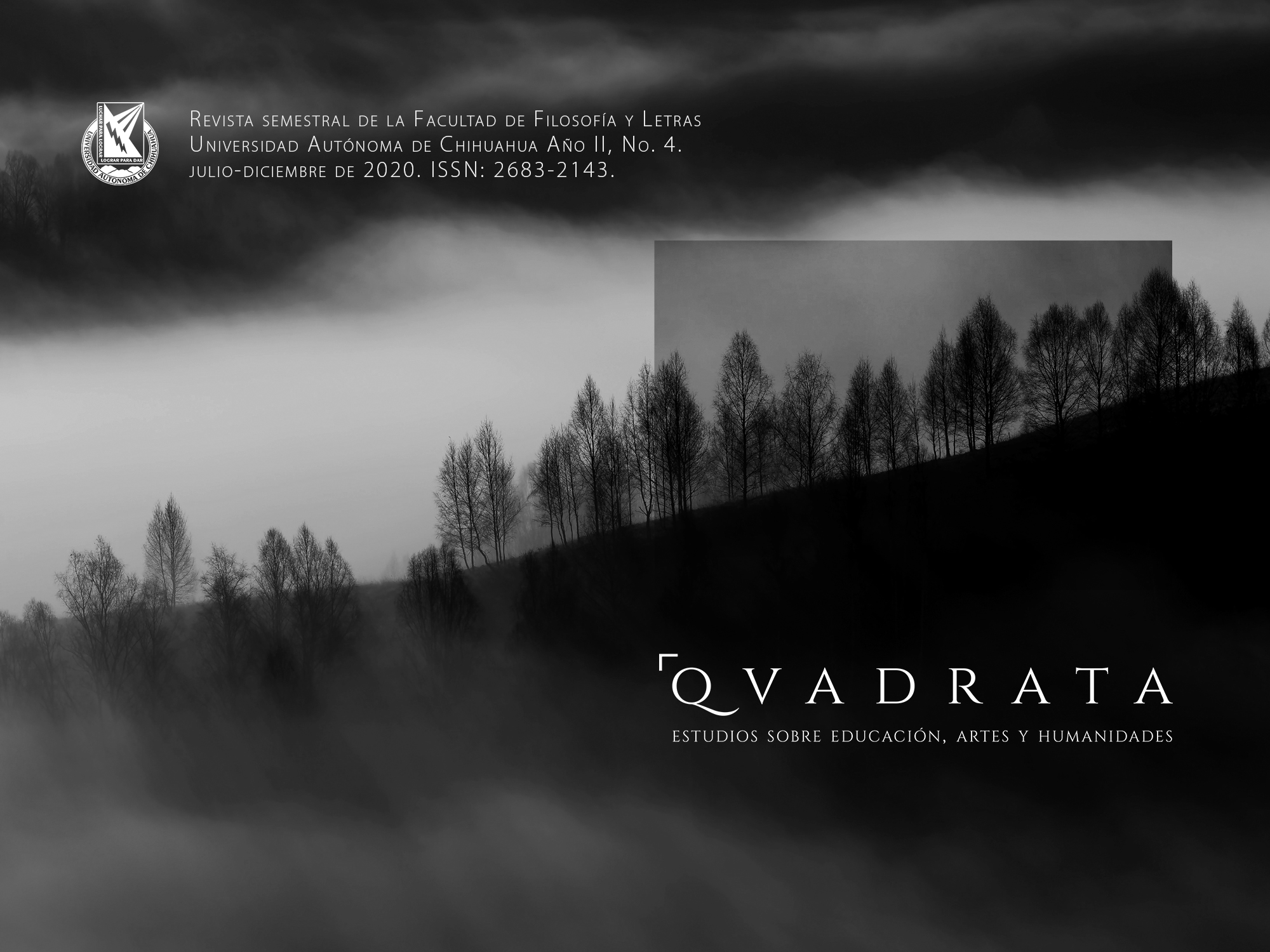Today, what does it mean to see? Visual thinking no longer exists?
DOI:
https://doi.org/10.54167/qvadrata.v2i4.775Keywords:
Thought, Perception, See, Faith, TechnologyAbstract
Regarding the pretentious evolutionary process of man, we have been told that in order to survive we adapt by shedding aspects that tie us to a primitive state of life. As if we need to leave part of our body behind; emphasizing what we have acquired as a superior value for which we should be grateful. However, we generally forget that what we leave behind, be it instincts, little fingers, hair on our faces, prickling of the skin, display of almost animal attitudes, are traits that make us more human, more sweaty. And above all more present and accomplices coexisting with the natural environment. Understanding as natural that which has not been intervened or instrumentalized not even by the look or the imagination. Being the feature of sight the most disturbing around the evolutionary theme, we can observe that it has become the first tool that Homo Faber has used to imagine the world for which it is necessary to evolve.
Creating in turn other tools that help you shape that new world. Such as religious faith, education as a tool, extractivism as a loving exchange, heterosexual family structure and, perhaps the most gallant of all, technology as a source of storytelling
References
Aumont, Jacques (1992). La imagen. Barcelona. Paidós.
Debord, Guy. (1995). La sociedad del espectáculo. Santiago, Chile: Ediciones Naufragio. 82 pp
Espinal Pérez, Cruz Elena. (Agosto de 2011). “El cuerpo: un modo de existencia ambiguo. Aproximación a la filosofía del cuerpo en la fenomenología de Merleau-Ponty”. Revista Co-herencia Vol. 8, No 15 Julio - Diciembre 2011, pp. 187-217 Medellín, Colombia
Esposito, Roberto. (2003). Communitas, orígen y destino de la comunidad. Ciudad Autónoma de Buenos Aires: Amorrortu/editores.
Fumagalli, Andrea. (Octubre de 2010). “Bioeconomía y capitalismo cognitivo, hacia un paradigma de acumulación”. Madrid, España: Traficantes de sueños
García Linera, Álvaro, Rául Prada, Luis Tapia, Oscar Vega Camacho. (2010). El Estado, campo de lucha. La Paz, Bolivia: Muela del Diablo, editores. 101 pp
Goebbels, Joseph. (1934). Discurso sobre la propaganda. En Der Kongress zurNürnberg.
Hitler, Adolf. (1926). Mi lucha. Barcelona: Paidós
Hustvedt, Siri. (2017). La mujer que mira a los hombres que miran a las mujeres. Ciudad autónoma de Buenos Aires: Seix Barral
Laswell, Harold. (1985). “Estructura y función de la comunicación de masas en la sociedad”, en: Moragas Spá, M. (comp.). Sociología de la comunicación de masas. Barcelona: G Gili
Merleau-Ponty, Maurice (1985). Fenomenología de la percepción. España: Planeta
Munich: Zentralverlag der NSDAP
Ruíz, Raúl. (2014). Poéticas del cine. Universidad Diego Portales, Santiago de Chile: ediciones universidad Diego Portales





 QVADRATA. Estudios sobre Educación, Artes y Humanidades año V, número 9, enero-junio de 2023, es una publicación semestral editada por la Universidad Autónoma de Chihuahua. Calle Escorza #900. C.P. 31000, Chihuahua, Chih. Tel. (614) 439-1500 ext. 3844,
QVADRATA. Estudios sobre Educación, Artes y Humanidades año V, número 9, enero-junio de 2023, es una publicación semestral editada por la Universidad Autónoma de Chihuahua. Calle Escorza #900. C.P. 31000, Chihuahua, Chih. Tel. (614) 439-1500 ext. 3844, 
